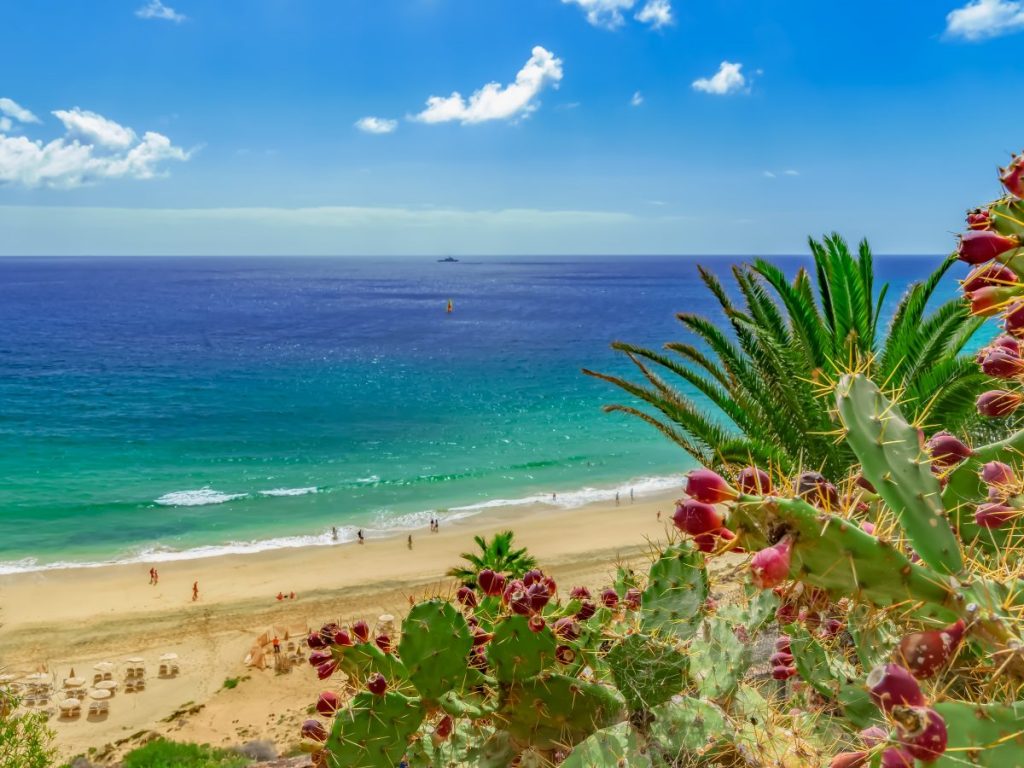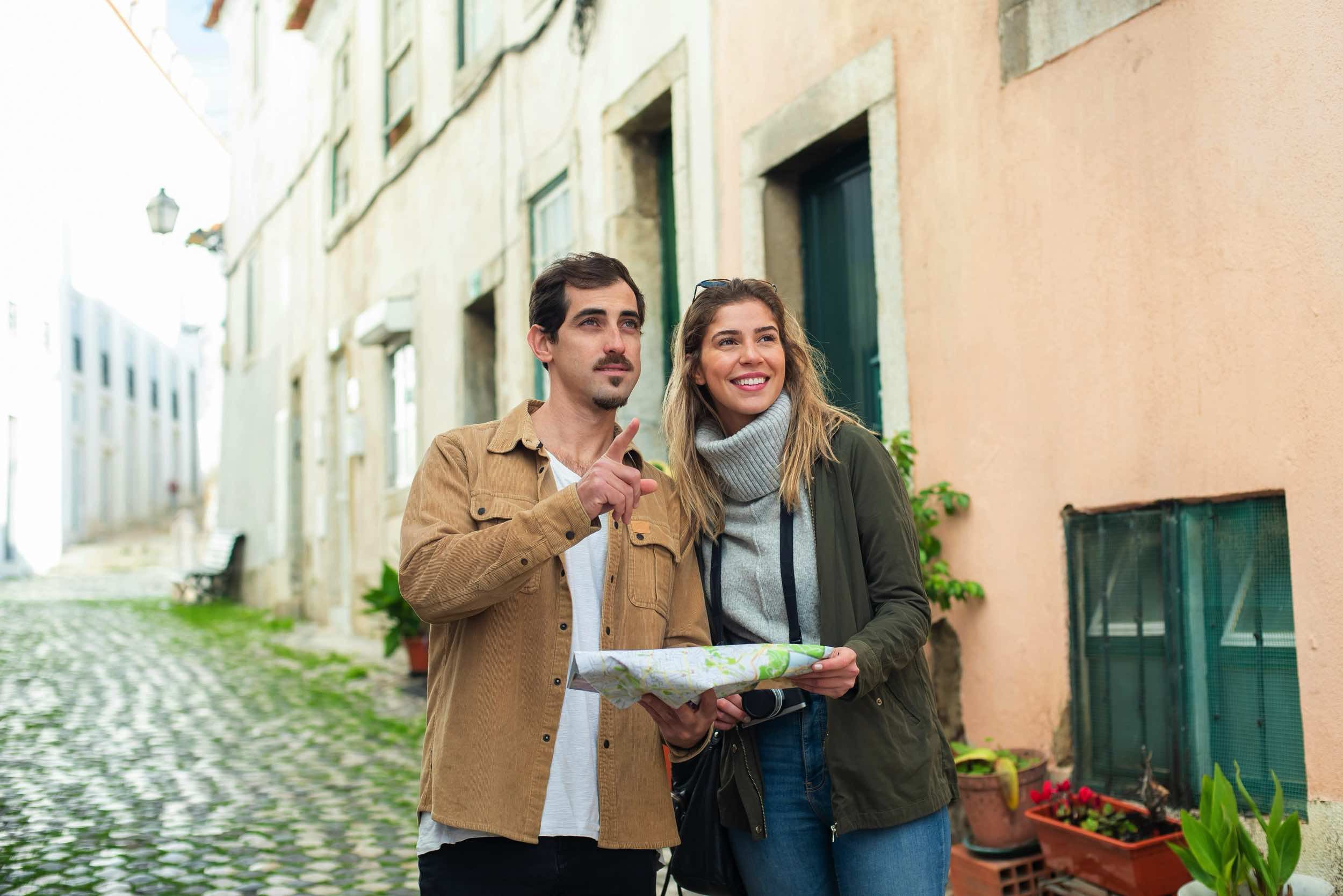Home - Global mobility - Moving to Fuerteventura: Everything you need to know
Moving to Fuerteventura: Everything you need to know
Countless digital nomads are moving to Fuerteventura

Table of Contents
The Canary Islands have been growing in popularity with the international digital nomad community, and among them, the second largest island – Fuerteventura – is poised to take the crown as the nomads’ favorite.
It is a year-round island with balmy temperatures, located as it is just off the coast of Morocco and Western Sahara, and cooled at the same time by strong winds that gave rise to the island’s name. At 100km long and about 25k wide, it is a good deal smaller than Tenerife, and far less dense. It is a draw for lovers of surfing and watersports around the coastal areas, while the mountains and valleys of the interior are sparsely populated, though have protected areas. Many tourists spend days driving and trekking through the interior for the peace and tranquillity it brings.
Corralejo, to the north and overlooking Lanzarote, is the island’s best-known resort, while Puerto del Rosario is the administrative center with good infrastructure and communications and around 40,000 inhabitants. And the beautiful whitewashed village of Betancuria, with narrow streets filled with flowers, screams charm for those seeking a peaceful life.
There is a sizable nomad community here, many drawn by the opportunity to combine work with watersports, and a good offering of co-working opportunities and coliving spaces. One resident says with evident pride: “Fuerteventura is the perfect place for people who want to live by the ocean's tides and the moon's phases. All year round there is a mild climate."
“Temperatures rarely drop below 18 degrees or go above 28. Beaches are the best in the Macaronesian Archipelago and even though Fuerteventura is the second biggest island in size of the Canary Islands, only comes fourth population-wise. So no crowded beaches and a paradise for watersports enthusiasts.”
What you should know before moving to Fuerteventura
Due to its small population, certain things may not be as readily available and for that reason, a car on the island is a must.
Accommodation rental prices are higher than on mainland Spain and due to it being a very touristy area, also the cost of living is higher. Luckily, the special tax status makes petrol, alcohol and luxury items like perfume cheaper, so overall it is comparable – and did we mention the beaches and haunting interior?
It is the perfect place for people who want to live by the ocean's tides and the moon's phases.
Legal requirements
If you are a EU citizen, you have unlimited freedom of movement throughout the Schengen Area, the 26 countries of the EU that have abolished passport controls. These are: Germany, Austria, Belgium, the Czech Republic, Denmark, Estonia, Finland, France, Greece, Hungary, Iceland, Italy, Latvia, Liechtenstein, Lithuania, Luxembourg, Malta, the Netherlands, Norway, Poland, Portugal, Slovakia, Slovenia, Spain, Sweden and Switzerland.
Digital Nomad Visa
Currently on the Spanish Government’s timetable of the proposed legislation is a proposal for the Digital Nomad Visa. This should reach Parliament this autumn and is expected to be the subject of discussions and amendments, so with luck it will become law by next spring.
It’s mainly aimed at non-EEA nationals (British included) and Spaniards who have been out of Spain for at least five years.
Does the Digital Nomad Visa bring with it tax benefits?
Yes, this is one of the main attractions of the new visa. Successful applicants would be eligible for a reduced rate of non-resident income tax. Instead of paying the usual rate of 25%, Spanish digital nomad visa holders would pay just 15% for up to four years. foreigners who get this new type of visa in Spain will be able to include close family members such as spouses and children in the visa provisions.
Requirements for the Digital Nomad Visa
Foreigners from third-party countries (including the UK) may apply for this type of visa if they work for companies based outside of Spain. Their work for Spanish companies may not exceed 20% of the total.
They must prove the following:
- They have worked remotely for at least a year
- The work can be carried out remotely
- If they are under contract to a company, that they have had a professional relationship with the company for at least three months and that the company permits remote working
- If they are freelance, they work with at least one company outside of Spain and must be able to provide the terms and conditions of the remote work.
UK citizens and other non-EU citizens
There is another option as well, for citizens of the UK and other non-EU countries, that of purchasing a property. One-bed apartments on Fuerteventura start from around €60,000, and 2-beds from around €100,100.
Sorry to bring up the B-word but Brexit has meant some changes.
If you remain tax-resident in the UK, provided you comply with the requirements above, there is nothing to stop you from owning a property as overseas investment. We do advise you to take professional advice to ensure you are compliant with Spanish law, however.
And if you still wish to move to Spain and intend to buy a second property as an investment, you need to explore what is called a Golden Visa or a Non-Lucrative Visa.
Golden Visa
This is the simplest and most straightforward way of doing it. It requires a property investment of more than €500k but essentially gives you almost all the rights you would have had pre-Brexit, including the right to start a business and the right to move freely within the Schengen Zone.
Non-Lucrative Visa
You are eligible for the Non-Lucrative Visa in Spain for a single person by proving you have €2,150 per month net to live on. You can also apply as a couple for around €2,800 net per month.
Once you have paid your rent, mortgage, or other accommodation costs this means you have more than enough to live on in Fuerteventura with those figures. If your income is above the minimum levels required for the non-lucrative visa then you can have an enviable lifestyle in Fuerteventura.
And if you have bought a property outright and have no mortgage or rental costs then the minimum numbers for the non-lucrative visa look very good for living on the Canary Islands.
Take professional advice
Please do ensure that you consult with a gestor (accountant), as well as a property lawyer and estate agent. Here at Globexs, we have numerous contacts we would be happy to share with you.
Best places to live
The north of the island has the most inhabitants and therefore also the most amenities. Corralejo, Lajares and El Cotillo are very popular. In the south of the island, most expats and nomads live around Morro Jable, Costa Calma, and Gran Tarajal. The vibe is quieter and more laid-back in the south.
Globexs rentals in Fuerteventura
We are passionate about Global Mobility, and we would love to share our enthusiasm with you. Compare our rentals in Fuerteventura, or contact us for more information.





